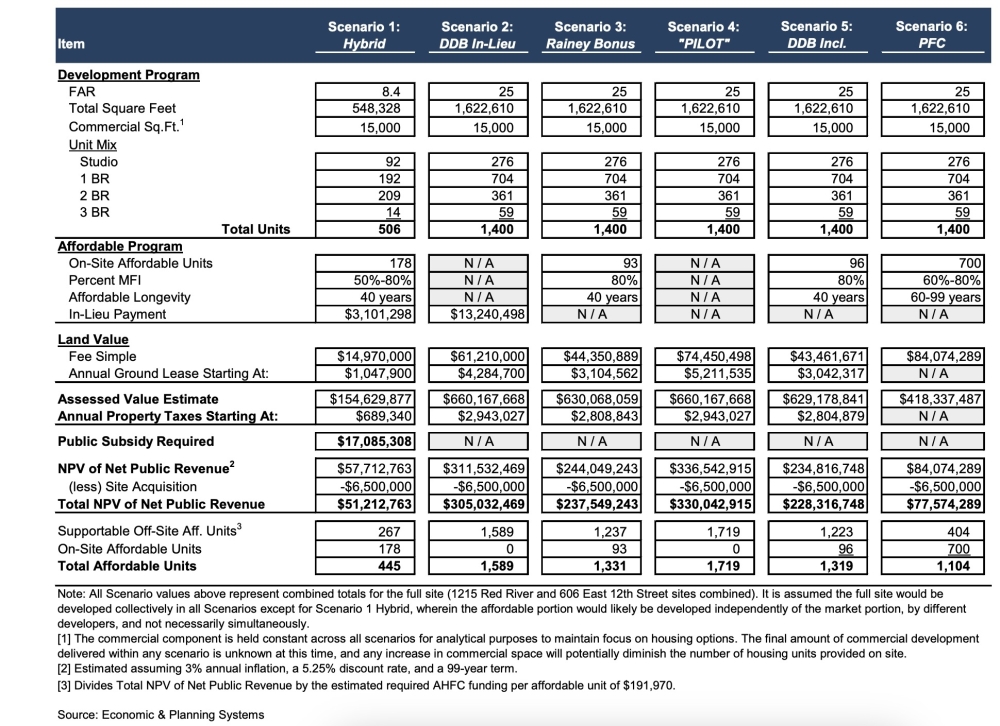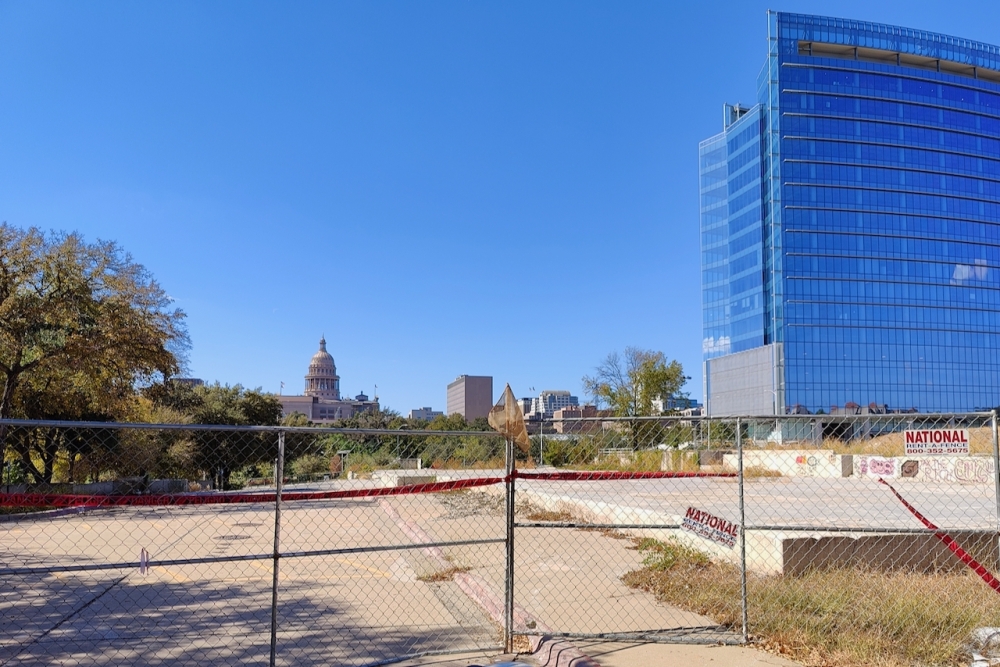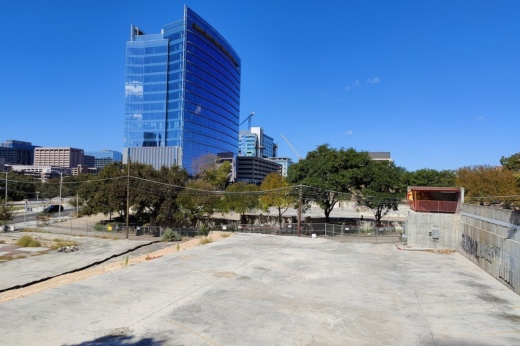The background
In 2017, city officials took over the old HealthSouth medical office and parking garage at 1215 Red River St., Austin and 606 E. 12th St., Austin. Since then, City Council members have seen various options for replacing those facilities with high-rises that could significantly increase the amount of income-restricted housing downtown.
Years of planning led to negotiations between the city and developer Aspen Heights Partners for two 37-story towers and almost 1,000 residences in the medical Innovation District. But citing worsening market conditions, Aspen Heights scaled down its proposal before determining it would no longer be profitable, and the city ended talks in spring 2023.
By late last year, city officials requested a new analysis of developing the HealthSouth property with affordable housing. Financial consultant Economic & Planning Systems, Inc. shared several possible options early this year, ranging from a low- and high-rise project with hundreds of affordable and market-rate units, to larger high-rises with 1,400 residences and less affordable housing on site.
What's happening
To clear the way for the anticipated redevelopment, council voted to tear down the old structures at 12th and Red River streets. The $476,300 demolition was completed by AAR, Inc. in June—with almost two-thirds of materials from the aging facilities reused or recycled, according to the city—and the properties now sit empty and ready for future construction.
This fall, city staff also reported on two additional development options from EPS including:
- A 1.62 million-square-foot, 1,400-unit project with 96 on-site affordable units
- Another project of the same total size with 700 affordable units, and the potential to fund more than 400 off-site

The PFC project would bring several times more low- and middle-income housing downtown than the others reported on by EPS so far. However, that structure would also see the city miss out on significant tax revenues from its prime downtown real estate that could otherwise be used on different programs over the coming decades.
Austin alone could lose out on an estimated $121.46 million in taxes over 99 years, EPS found. Travis County, Austin ISD, Austin Community College and Central Health would also lose a combined $371.48 million.
"The scenario analysis demonstrates different opportunities to leverage the city’s land assets to produce affordable housing and revenues," interim Housing Director Mandy DeMayo wrote in a memo. "[The PFC] produces the most on-site affordable units and provides the quickest path to funding additional off-site units. However, it comes with the trade-off that millions of dollars in property tax revenues will not be generated to support any other public services throughout its 60-99 year affordability period."
What's next
City leaders have yet to determine how to move the prominent redevelopment forward based on the tradeoffs between the different concepts from EPS.
The October memo was the first time Austin housing staff reported on the project possibilities since earlier this year. Council and City Manager T.C. Broadnax will decide what steps to take next.
"We are continuing to evaluate all options. We do not have a firm timeline. We will return to council with a recommendation," Broadnax's office said through a city spokesperson.
Council members Zo Qadri and Natasha Harper-Madison, whose districts include or are near the HealthSouth property and who've previously directed some of the planning process, declined to comment on the new scenarios or possible next steps this fall.

The city's vacant land is located near other high-profile redevelopments and improvements in the downtown Innovation District:
- Around the corner on 12th Street, LV Collective—the Austin developer behind several local projects including the Paseo tower on Rainey Street—is planning a 39-story mixed-use building with more than 500 residences.
- Just north of the city properties, Central Health—Travis County's hospital district—plans to build a dense, mixed-use campus on the 14-acre former Brackenridge hospital site to generate revenue to support its low-income health care services.
- A few blocks away, The University of Texas demolished the former Frank Erwin Center over the past year and two new hospital towers will be built there.
- Across the street, the city is converting a former strip of Red River Street along Waterloo Park into a public plaza area.





